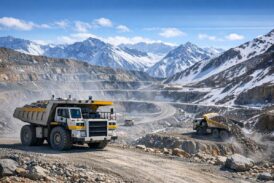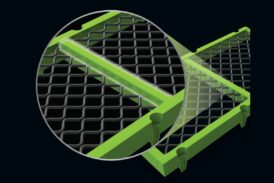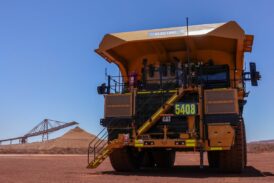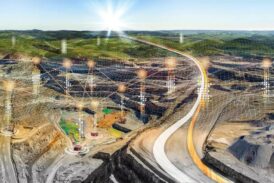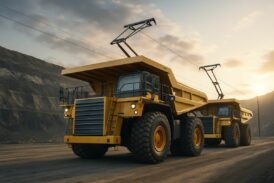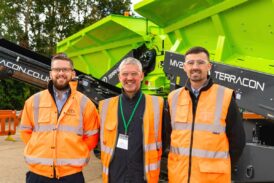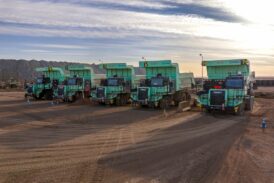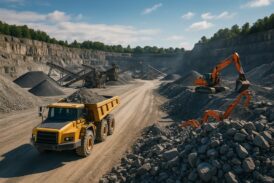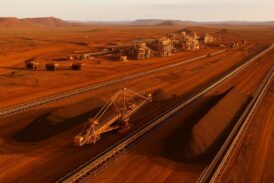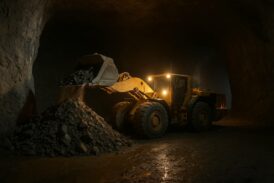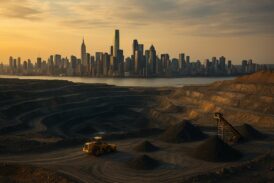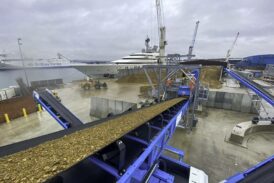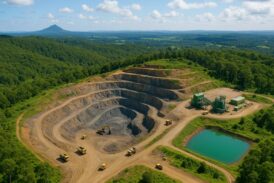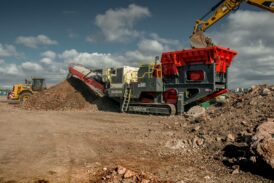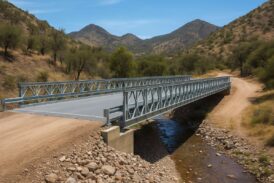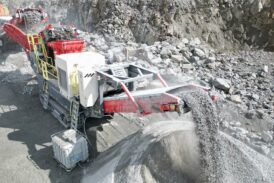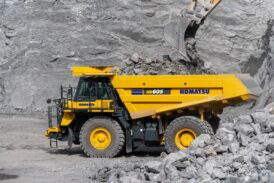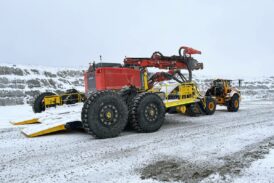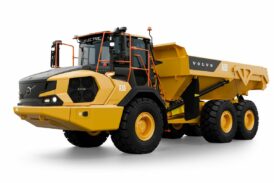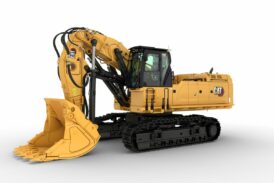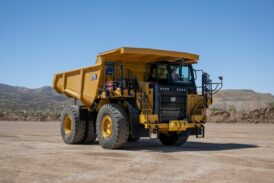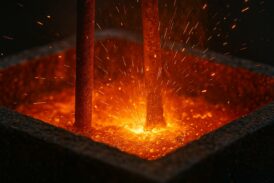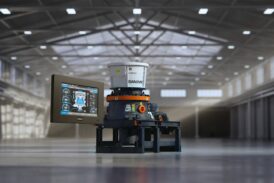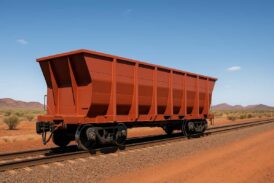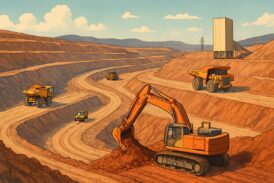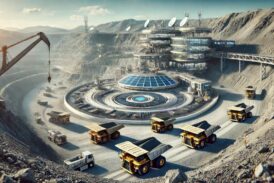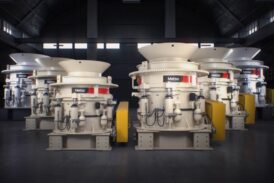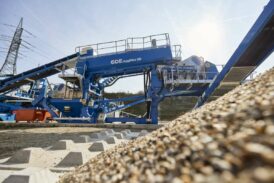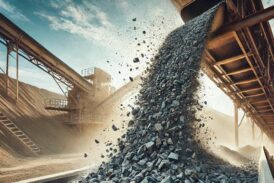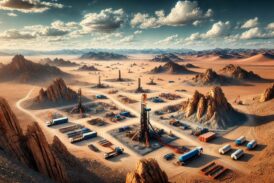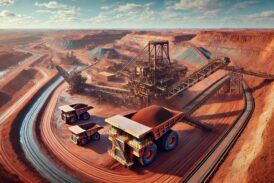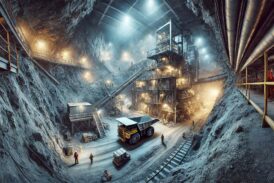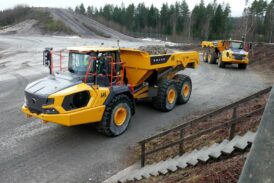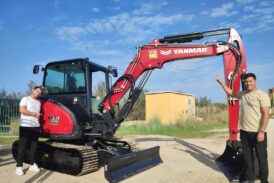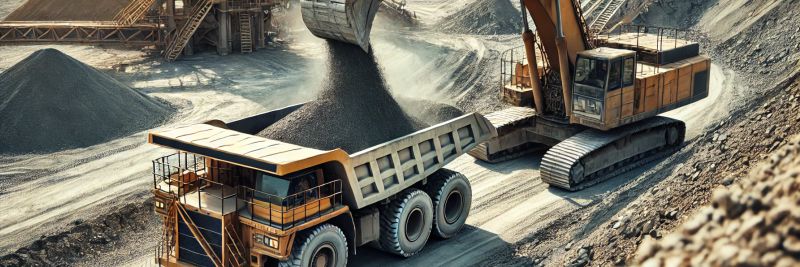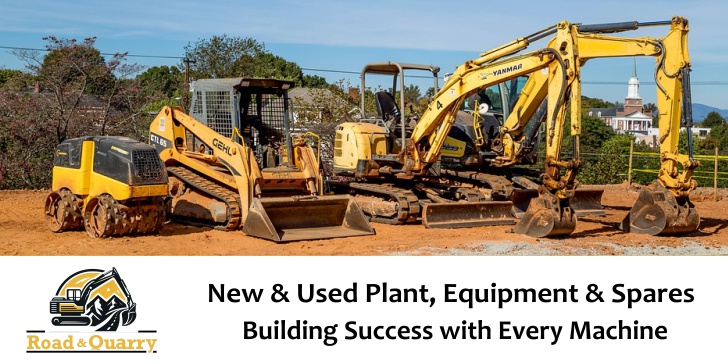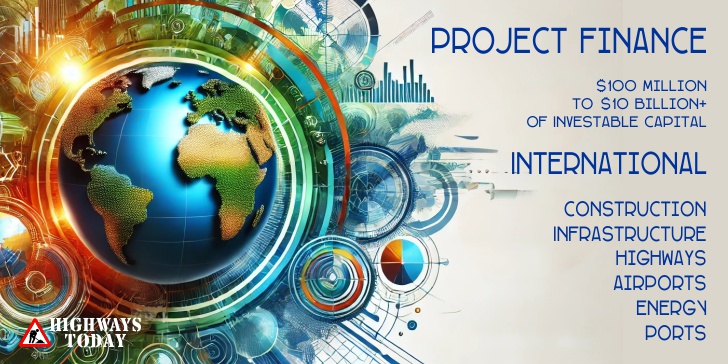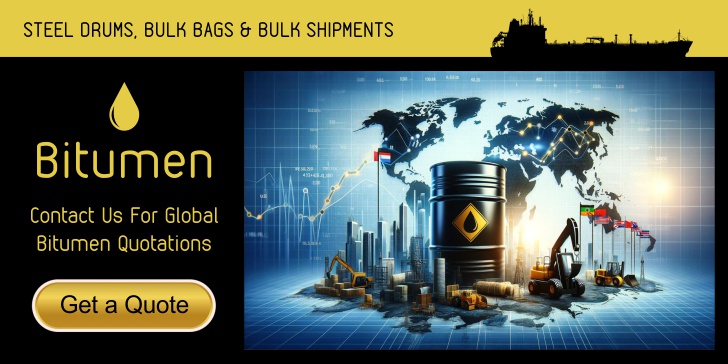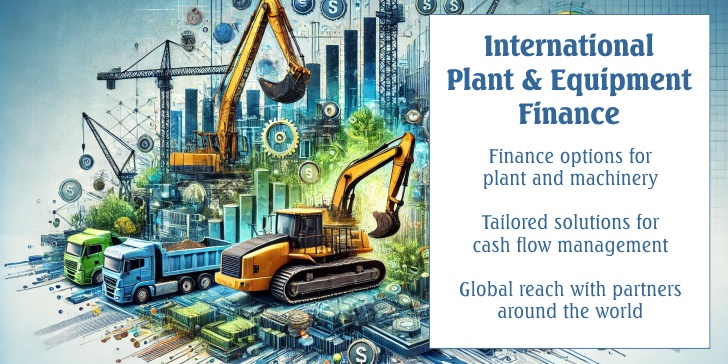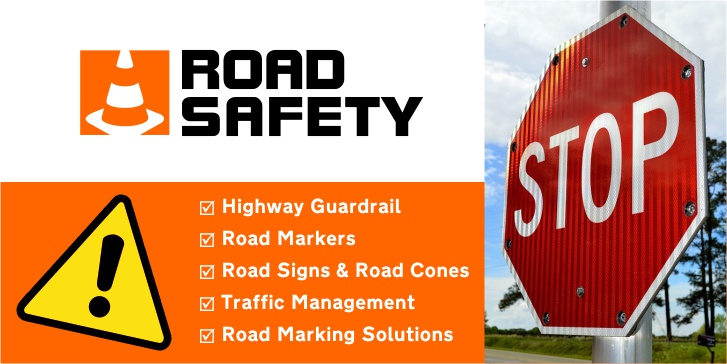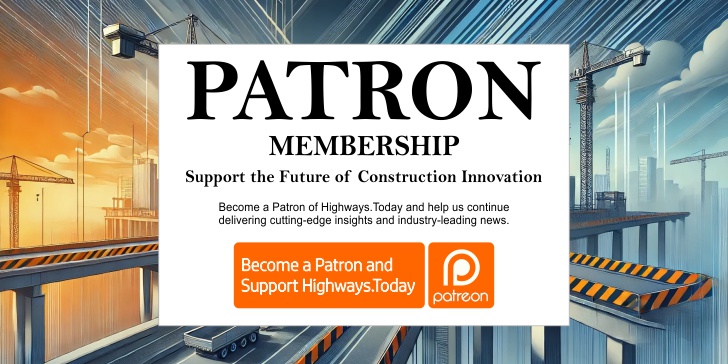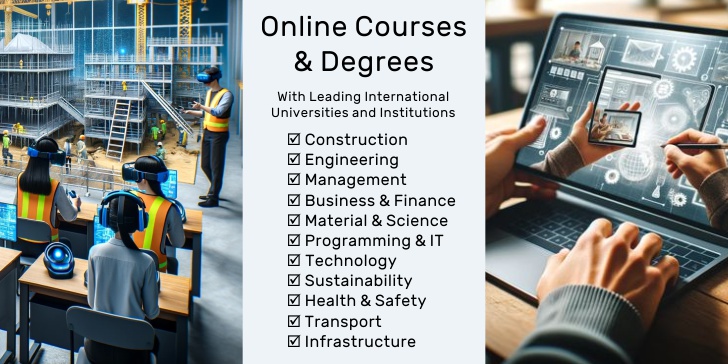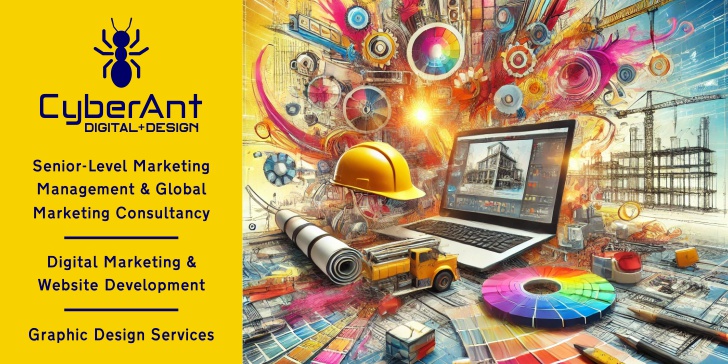
Welcome to Quarry and Mining Month
This month we dive into the rugged and fascinating world of quarries and mining. These industries form the backbone of modern infrastructure, providing the raw materials essential for construction, manufacturing, and energy production. At Highways.Today, we dedicate this month to celebrating the innovations, challenges, and achievements within this vital sector.
Throughout the month, we’ll explore how cutting-edge technology, sustainable practices, and advanced engineering are transforming the way we extract and process natural resources. From aggregate quarries supplying the foundations of our cities to high-tech mining operations unearthing precious minerals, we aim to shed light on the processes that shape the modern world.
Expect insightful articles, expert interviews, and the latest news on:
- Sustainability in Quarrying and Mining: How the industry is reducing its environmental impact while maximizing efficiency.
- Innovative Technologies: The role of automation, robotics, and IoT in optimizing extraction and processing.
- Safety and Training: Best practices to ensure a secure working environment in challenging conditions.
- Global Trends and Case Studies: Showcasing groundbreaking projects and key market developments.
Whether you’re an industry professional, investor, policymaker, or simply fascinated by the machinery and operations behind our world’s infrastructure, this month promises a wealth of information and inspiration.
Stay tuned for our featured stories and special content, as we shine a spotlight on the people, technologies, and innovations driving the quarrying and mining industries into the future. Let’s get digging!
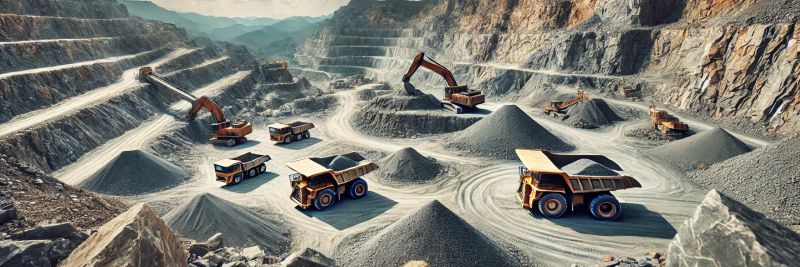
Quarrying: The Foundation of Infrastructure
Quarrying focuses on extracting materials such as aggregates—crushed stone, gravel, sand, and other materials essential for road building and construction. These raw materials are the building blocks of highways, bridges, buildings, and runways. Quarrying operations typically take place near the surface and involve processes like blasting, crushing, and sorting to create standardized products ready for use.
- Key Materials: Aggregates, limestone, granite, sand, and clay.
- Primary Application: Road construction, concrete production, and infrastructure development.
- Economic Importance: Aggregates form the foundation of most infrastructure projects, ensuring durability and sustainability.
Mining: Unlocking Earth’s Hidden Wealth
Mining is the process of extracting valuable minerals and metals from the earth. Unlike quarrying, mining often involves deeper excavations and more complex techniques to recover resources critical for manufacturing, energy production, and technology.
Materials like iron, copper, bauxite, and lithium are vital for construction, energy storage, and electronics, while precious metals such as gold and silver serve as currency, investment assets, and components in high-tech applications. Rare metals like cadmium and cobalt are indispensable in renewable energy technologies, including batteries and solar panels.
- Key Materials: Iron ore, bauxite (aluminum), copper, gold, silver, lithium, cadmium, and other rare earth elements.
- Primary Application: Manufacturing, electronics, renewable energy, and technology development.
- Economic Importance: These materials power industries worldwide, from steelmaking to electric vehicles.
Aggregates: The Priority for Road Building
Among the wide array of materials extracted, aggregates hold the highest priority for road construction. Highways, motorways, and urban streets depend on durable, high-quality aggregates to ensure long-lasting performance. Their consistent supply ensures infrastructure projects remain on schedule and cost-effective.
By understanding the critical differences and overlaps between quarrying and mining, we can better appreciate their combined impact on the global economy and the essential role they play in shaping our built environment. December’s Quarry and Mining Month at Highways.Today will delve deeper into these industries and highlight the innovations driving their future.

Industry Trends: Evolving Landscapes in Quarrying and Mining
The quarrying and mining industries are undergoing a seismic shift, driven by global challenges, technological advancements, and changing market demands. As the backbone of infrastructure and industrial development, these sectors must continuously adapt to ensure efficiency, sustainability, and profitability. Below, we explore the key trends shaping the future of quarrying and mining.
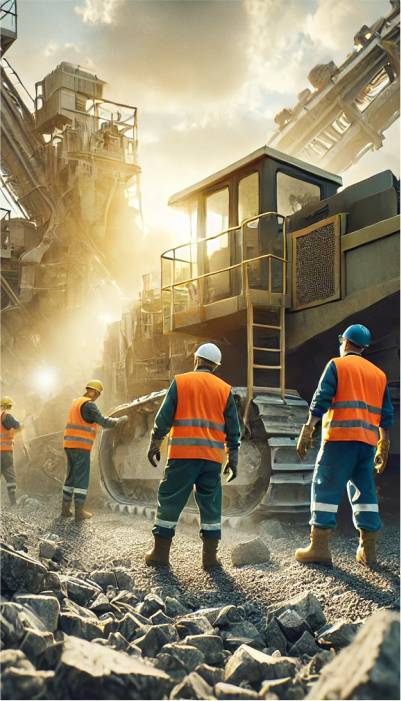
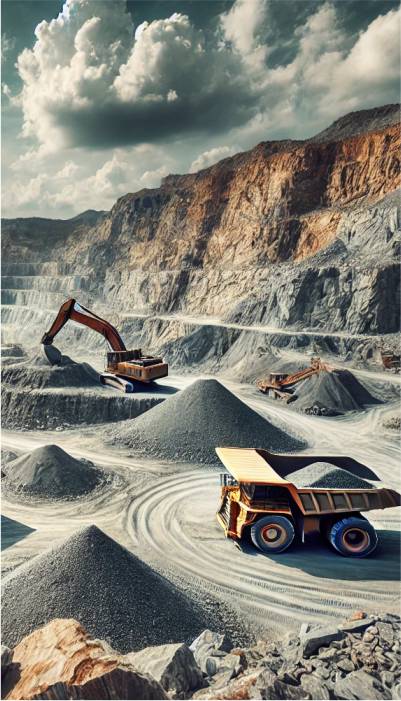
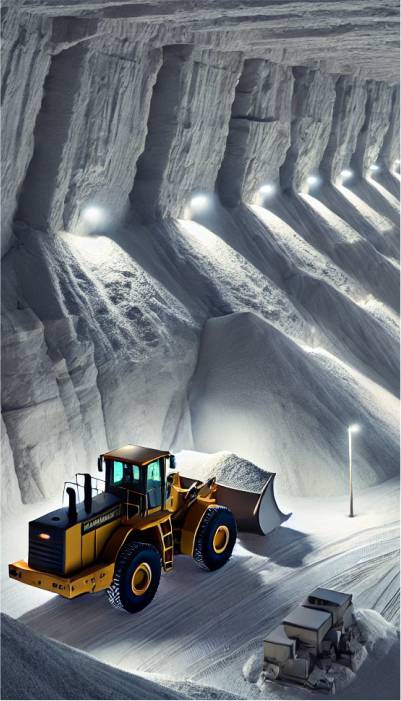
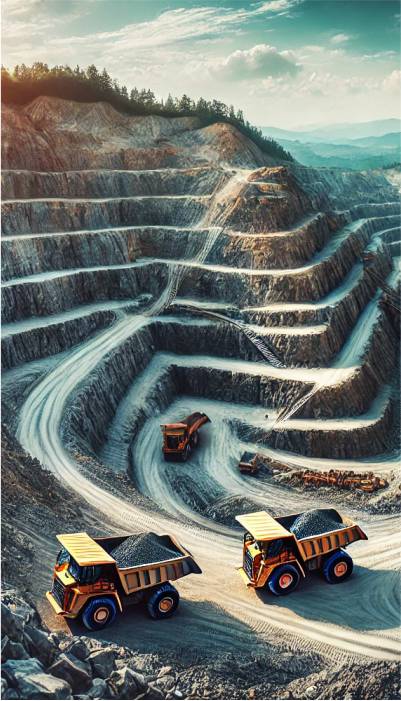
Sustainability Takes Center Stage
Environmental stewardship is no longer optional—it’s a business imperative. With increased scrutiny from regulators, investors, and the public, quarrying and mining companies are adopting sustainable practices to minimize their ecological footprint. Key approaches include:
- Rehabilitation of Mined Lands: Restoring ecosystems and creating community spaces post-extraction.
- Renewable Energy Integration: Using solar, wind, or hydroelectric power to reduce carbon emissions.
- Circular Economy Practices: Recycling waste materials from mining operations to minimize resource depletion.
Sustainability is also driving demand for ethically sourced materials, pushing companies to improve transparency and traceability throughout their supply chains.
Urban Quarrying and Localized Operations
As urbanization accelerates, the need for locally sourced aggregates is growing. Urban quarrying—extracting materials closer to city centers—is gaining traction as a solution to reduce transportation costs and emissions. However, it comes with challenges such as stricter regulations, noise control, and maintaining community relations.
Global Demand for Strategic Minerals
The push for renewable energy and advanced technologies has led to a surge in demand for strategic minerals like lithium, cobalt, and rare earth elements. These resources are essential for manufacturing batteries, electric vehicles, and electronics. Countries rich in these materials are becoming focal points for international investment, but geopolitical tensions and ethical concerns around mining practices remain significant hurdles.
Digitalization and Data-Driven Operations
The industry is embracing digital transformation to improve operational efficiency and resource management. Data analytics, AI, and IoT are enabling real-time decision-making, optimizing production schedules, and reducing waste.
This trend is particularly vital for large-scale mining projects, where even small improvements can lead to substantial cost savings.
Regulatory Evolution and Compliance
Governments worldwide are tightening regulations to ensure responsible extraction practices. These include stricter safety standards, environmental compliance measures, and labour laws.
Companies must remain agile to navigate these changes, adopting advanced monitoring systems and investing in compliance-focused technologies.
Workforce Dynamics and Skill Development
The rise of automation and digital tools is reshaping workforce requirements. While traditional skills remain critical, there’s an increasing need for expertise in robotics, data analysis, and environmental science.
Training programs and certifications are being updated to equip workers with the skills needed for this evolving landscape.
Resilience Against Global Disruptions
From pandemic-driven supply chain disruptions to geopolitical conflicts, resilience has become a key focus for quarrying and mining operations. Diversifying supply sources, investing in automation, and adopting risk management strategies are critical to maintaining continuity in an unpredictable global market.
These trends highlight the dynamic nature of quarrying and mining, as the industries balance economic, environmental, and societal considerations. Companies that embrace innovation and sustainability will not only thrive but also lead the charge in shaping a more responsible and resilient future for resource extraction.

Technology Trends: Innovations Transforming Operations
Quarrying and mining are embracing a technological revolution, leveraging cutting-edge tools and systems to improve efficiency, safety, and sustainability. These innovations are transforming how resources are extracted, processed, and managed, ensuring that operations remain competitive in a fast-changing world.
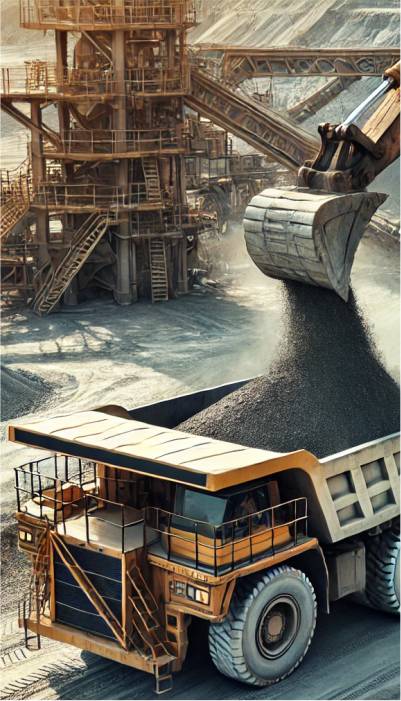
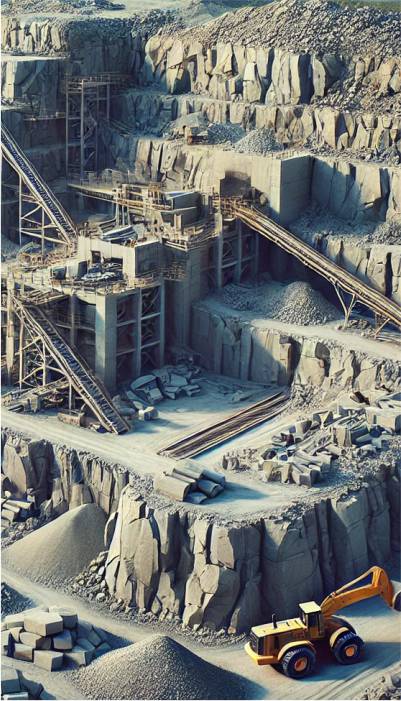
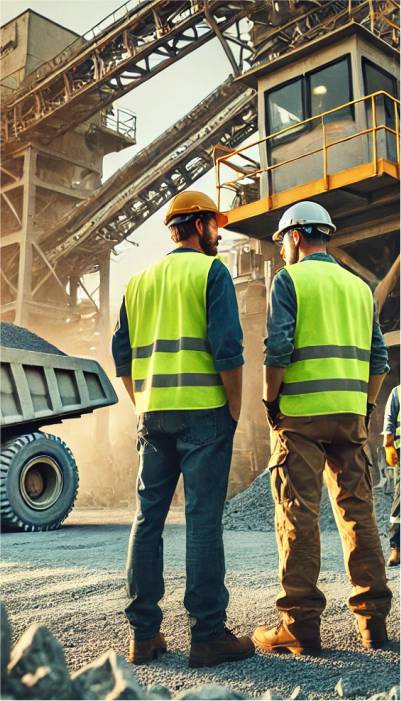
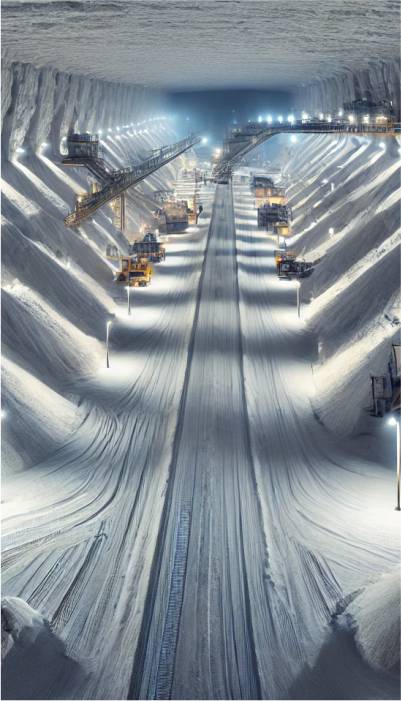
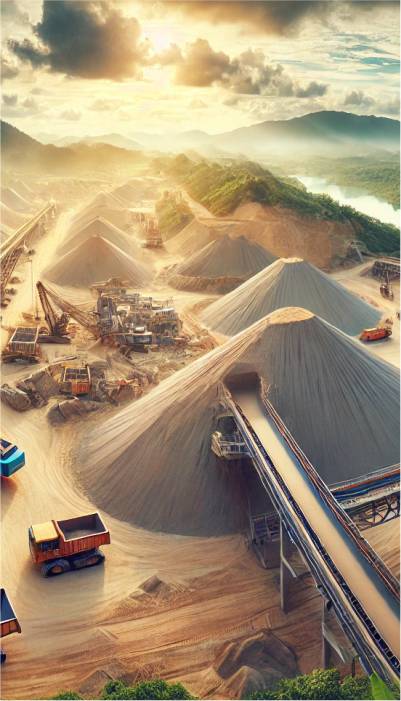
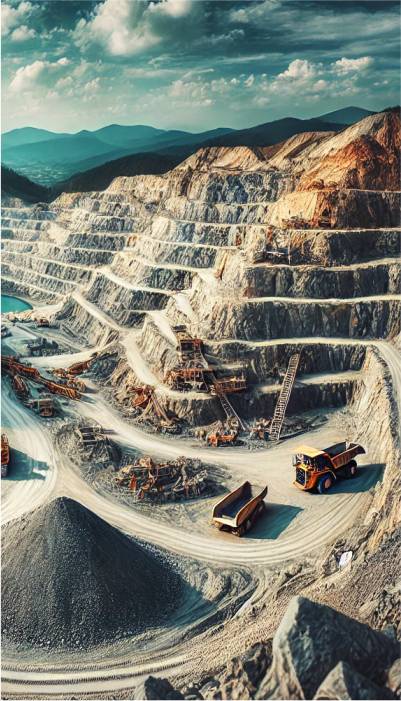
Automation and Robotics: The Rise of Smart Operations
Automation is no longer a future vision—it’s the present reality in quarrying and mining. From autonomous haul trucks to robotic drilling systems, smart technologies are streamlining operations, reducing human error, and increasing productivity.
- Autonomous Vehicles: Driverless trucks and loaders are optimizing material transport in mines and quarries, lowering costs and minimizing safety risks.
- Robotic Drilling: Precise, automated drilling systems improve accuracy, reduce material wastage, and enhance operational efficiency.
These technologies not only boost productivity but also allow operations in hazardous or remote areas with minimal human intervention.
The Internet of Things (IoT): A Connected Ecosystem
IoT is creating a network of connected equipment, sensors, and systems, enabling real-time monitoring and data-driven decision-making.
- Predictive Maintenance: IoT-enabled sensors monitor equipment health, predicting maintenance needs before breakdowns occur, reducing downtime and costs.
- Operational Optimization: Data from IoT devices help identify inefficiencies, optimize workflows, and maximize resource utilization.
- Environmental Monitoring: IoT systems track air and water quality around sites, ensuring compliance with environmental standards.
AI and Machine Learning: Intelligence for Better Decisions
Artificial intelligence (AI) and machine learning are enhancing operational intelligence, helping companies analyze vast datasets to identify patterns and make informed decisions.
- Resource Modeling: AI-powered tools create detailed models of resource deposits, improving accuracy in exploration and extraction.
- Energy Efficiency: AI optimizes energy consumption, reducing costs and carbon footprints.
- Risk Management: Machine learning algorithms assess risks in real time, from equipment failures to environmental hazards.
Drones and Aerial Surveying: Precision from Above
Drones have revolutionized surveying and inspection tasks, offering cost-effective and high-precision solutions.
- Surveying and Mapping: Drones equipped with LiDAR and photogrammetry tools create accurate 3D models of quarries and mining sites.
- Inspection: They provide a safer alternative for inspecting equipment, slopes, and inaccessible areas without endangering workers.
- Stockpile Measurement: Aerial views allow quick, accurate calculations of stockpile volumes, improving inventory management.
Digital Twins: Bridging the Physical and Digital Worlds
Digital twin technology creates virtual replicas of physical operations, enabling companies to simulate, monitor, and optimize processes.
- Real-Time Monitoring: Digital twins visualize site activities, offering insights for immediate adjustments.
- Scenario Testing: Operators can simulate various conditions to predict outcomes and plan efficiently.
- Lifecycle Management: From planning to decommissioning, digital twins enhance decision-making throughout the project lifecycle.
Sustainable Technology: Greening the Industry
Technologies focused on sustainability are gaining prominence, helping reduce the environmental impact of quarrying and mining operations.
- Renewable Energy Integration: Solar and wind energy power mining equipment, cutting down on fossil fuel dependence.
- Water Recycling Systems: Advanced filtration and recycling systems reduce water consumption in processing plants.
- Emission Reduction: Equipment retrofitted with cleaner engines or electric power minimizes greenhouse gas emissions.
Wearable Technology and Augmented Reality (AR): Enhancing Safety and Training
Wearable devices and AR are improving worker safety and training by offering real-time assistance and insights.
- Wearables: Smart helmets and vests monitor worker health and safety, providing alerts for fatigue or hazardous conditions.
- AR Training: Augmented reality simulates realistic scenarios for training, enhancing skills and awareness in a controlled environment.
Blockchain for Transparency and Traceability
Blockchain technology is emerging as a key tool for improving transparency and traceability in mining operations.
- Supply Chain Integrity: Blockchain ensures materials are ethically sourced and tracked throughout the supply chain.
- Contract Management: Smart contracts streamline agreements and transactions, reducing administrative burdens.
The integration of these technologies is driving a new era in quarrying and mining—one that prioritizes efficiency, safety, and sustainability. By embracing these innovations, the industry can meet evolving demands while addressing challenges in a rapidly changing global landscape.
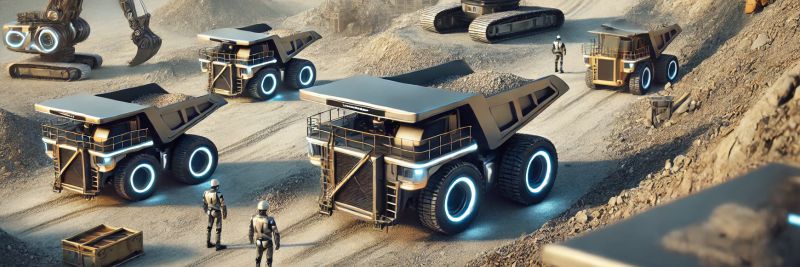
Industry Resources: Where to Find the Tools and Knowledge
The quarrying and mining industries thrive on access to the right resources—be it technical knowledge, regulatory guidance, or professional networks. Staying informed and equipped with the latest tools is essential for industry professionals to meet challenges and capitalize on opportunities. Below is a curated list of invaluable resources to help you navigate the dynamic world of quarrying and mining.
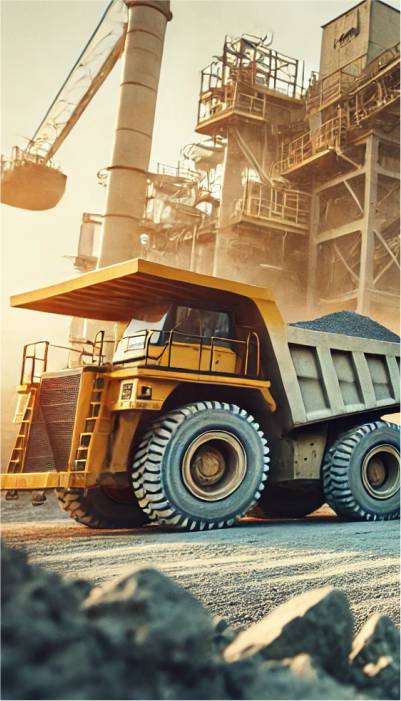
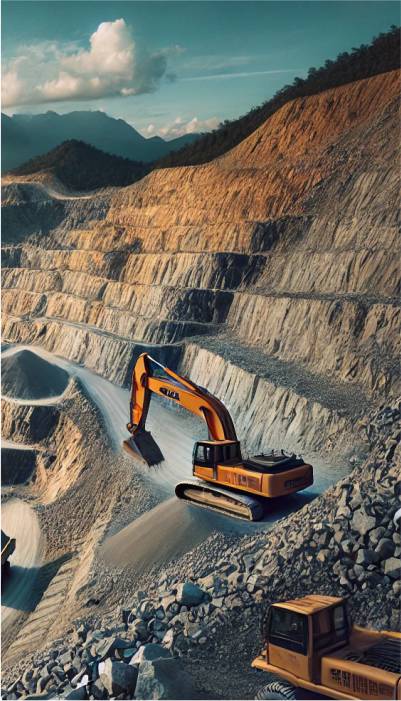
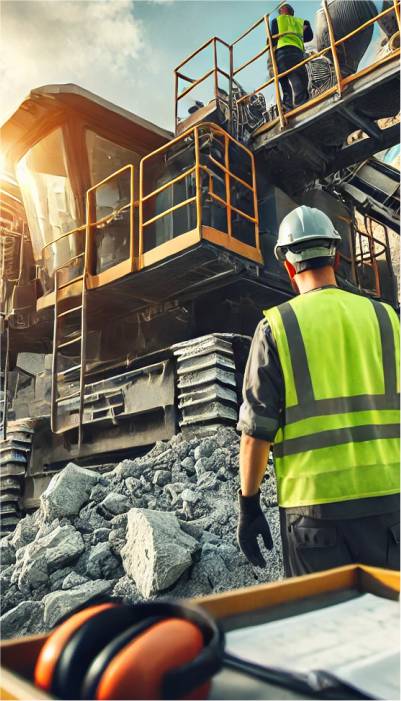
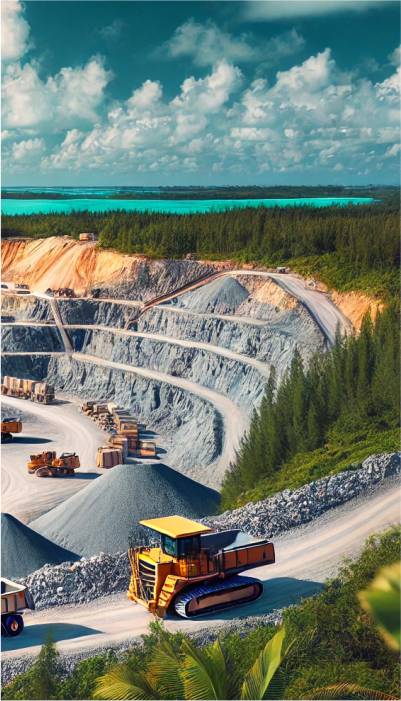
Professional Associations and Organizations
These organizations provide industry professionals with insights, advocacy, and opportunities for collaboration:
- National Stone, Sand & Gravel Association (NSSGA): Advocates for the aggregate industry, offering resources on best practices, regulatory updates, and training programs.
- International Council on Mining and Metals (ICMM): Focuses on sustainability and responsible mining practices, with a wealth of reports, case studies, and guidelines.
- Institute of Quarrying (IQ): Provides professional development opportunities, industry certifications, and networking for quarrying professionals.
Research and Reports
Access data and insights from authoritative publications and research organizations:
- US Geological Survey (USGS): Offers comprehensive mineral resources data and statistics, along with environmental studies and exploration guides.
- World Mining Data: Annual publications detailing global mineral production and trends.
- Fraser Institute Annual Mining Survey: Examines the investment climate of mining jurisdictions worldwide.
Government Resources and Regulatory Bodies
Stay up-to-date with regulations, standards, and guidelines from official bodies:
- Mine Safety and Health Administration (MSHA): Provides safety regulations, compliance tools, and accident prevention programs for the mining industry.
- European Aggregates Association (UEPG): Represents the aggregates industry in Europe, promoting sustainable practices and providing regulatory updates.
- Environment Protection Agency (EPA): Resources on environmental compliance, waste management, and sustainability initiatives for mining operations.
Industry Publications
Stay informed with specialized publications that report on trends, technologies, and market developments:
- Highways.Today: Your go-to source for the latest insights on aggregates for road construction and infrastructure projects.
- Mining.com: Covers global mining news, market trends, and technological advancements.
- Aggregates Business: Focuses on quarrying, construction materials, and equipment innovations.
Software and Tools
Empower your operations with cutting-edge software solutions:
- Trimble: Offers GPS and geospatial solutions for quarry and mining operations.
- Bentley Systems: Provides advanced modeling and simulation tools for mining infrastructure.
- Dassault Systèmes: Delivers virtual simulation tools for mine planning and operations.
Having access to these resources ensures industry professionals remain competitive and informed in a rapidly evolving landscape. Whether you’re seeking training, regulatory insights, or the latest technologies, these tools and organizations will help you stay ahead of the curve in quarrying and mining.
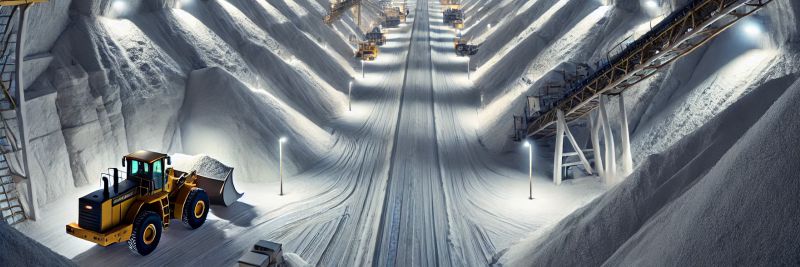
Industry Events: Connecting the Quarrying and Mining Community
Industry events provide invaluable opportunities for professionals in quarrying and mining to connect, exchange ideas, and stay updated on the latest technologies and trends. These gatherings foster collaboration, innovation, and networking, making them essential for industry growth. Here’s a selection of key events that bring together leaders, experts, and stakeholders from around the world.
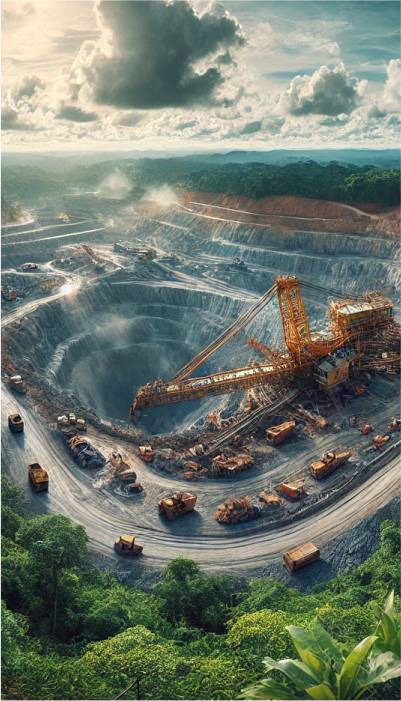
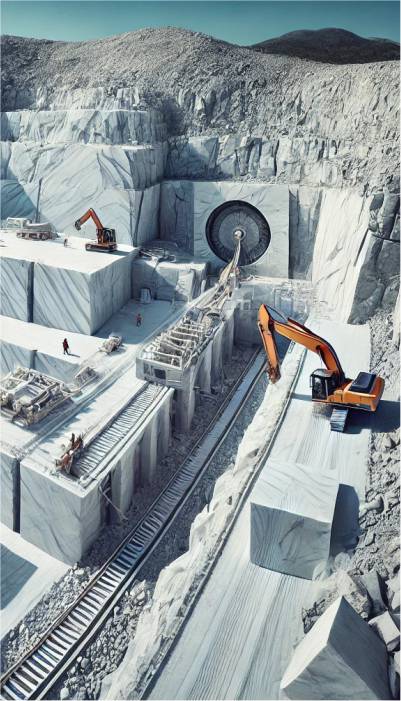

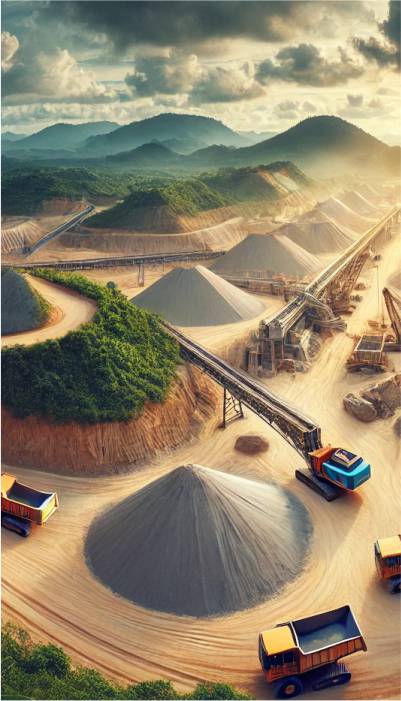
World Mining Congress (WMC) – Australia
- When: Every three years (Next: June 24–27, 2025)
- Why Attend: WMC is one of the largest global mining events, featuring discussions on innovation, sustainability, and policy in mining. It attracts thousands of delegates, exhibitors, and thought leaders from across the globe.
- Focus Topics: Digitalization, decarbonization, and global mining trends.
Hillhead Quarry Exhibition – UK
- When: Biennially (Next: June 25–27, 2024)
- Why Attend: Set in a live quarry environment, Hillhead showcases heavy machinery, equipment, and solutions for quarrying, construction, and recycling industries. Attendees can witness demonstrations in real-world conditions.
- Focus Topics: Machinery innovation, aggregates, and environmental solutions.
Mining Indaba – South Africa
- When: February 5–8, 2024
- Why Attend: Africa’s premier mining investment event, Mining Indaba focuses on fostering sustainable growth and investment in the mining industry. It attracts high-level policymakers, investors, and mining companies.
- Focus Topics: Critical minerals, ESG (Environmental, Social, and Governance), and resource exploration.
ConExpo-Con/Agg – USA
- When: Every three years (Next: March 3–7, 2026)
- Why Attend: North America’s largest construction and aggregate-focused trade show. It features over 2,800 exhibitors showcasing the latest equipment, technologies, and services for quarrying and construction industries.
- Focus Topics: Aggregates, heavy machinery, and construction technology.
International Mining and Resources Conference (IMARC) – Australia
- When: October 28–31, 2024
- Why Attend: IMARC connects global mining leaders with investors and innovators to discuss the future of the industry. It covers mining operations, technology, and sustainability.
- Focus Topics: Decarbonization, mining technology, and ESG.
Bauma – Germany
- When: Every three years (Next: April 7–13, 2025)
- Why Attend: The world’s leading trade fair for construction and mining machinery. Bauma offers a comprehensive showcase of equipment, innovations, and technologies shaping the industries.
- Focus Topics: Mining machinery, aggregates, and sustainable construction.
MINExpo International – USA
- When: Every four years (Next: September 2024)
- Why Attend: This massive event brings together mining professionals from around the globe to explore the latest equipment, innovations, and industry challenges.
- Focus Topics: Surface and underground mining technologies, safety, and energy efficiency.
GeoWeek – USA
- When: February 11–13, 2024
- Why Attend: Focused on geospatial technologies, GeoWeek is a must for mining professionals interested in surveying, mapping, and data integration.
- Focus Topics: LiDAR, 3D modeling, and geospatial analytics.
These events are vital touchpoints for professionals seeking to advance their knowledge, explore new technologies, and build meaningful connections within the quarrying and mining industries. By participating, you’ll gain access to the latest developments, discover innovative solutions, and network with peers and industry leaders shaping the future of the sector.
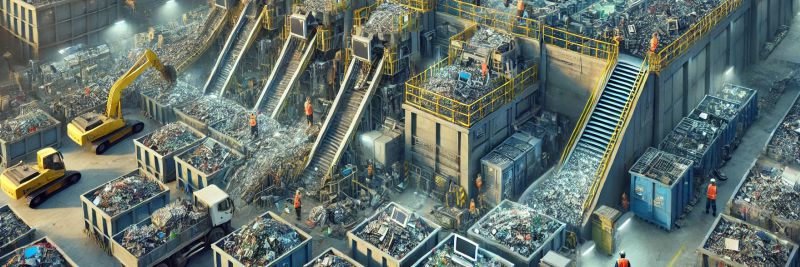
Training and Certification Resources: Building Expertise in Quarrying and Mining
he quarrying and mining industries are continuously evolving, demanding a workforce that is skilled, knowledgeable, and adaptable. From safety compliance to technical expertise, obtaining the right training and certifications is crucial for professionals aiming to excel in these fields. Below is a comprehensive list of resources to help individuals and organizations stay ahead in this competitive industry.
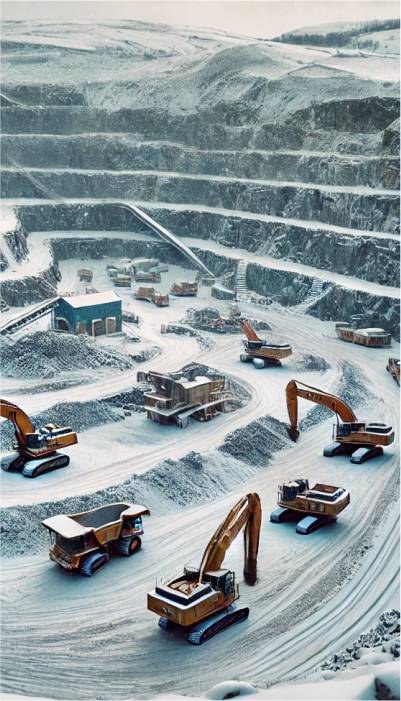
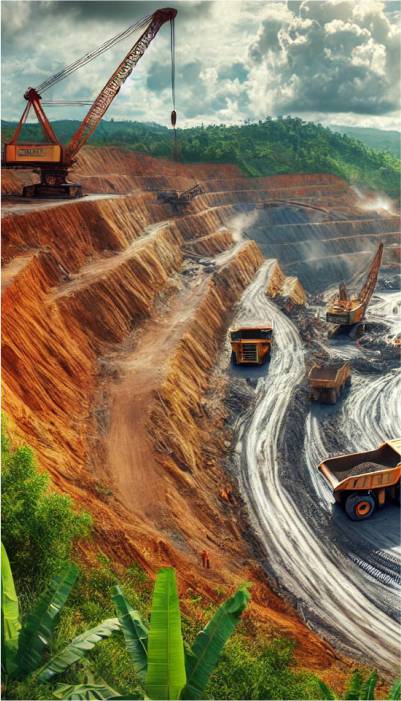
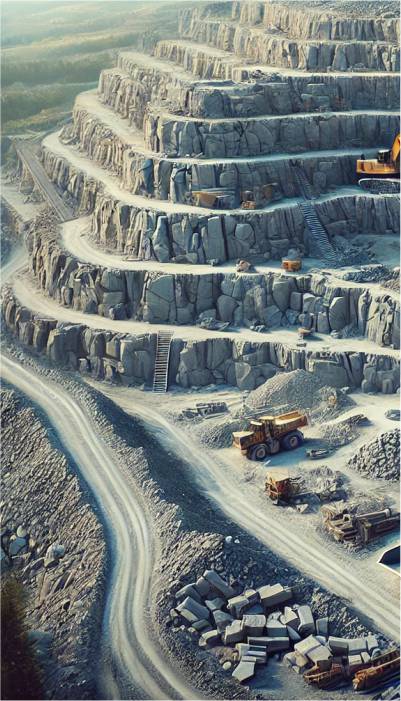
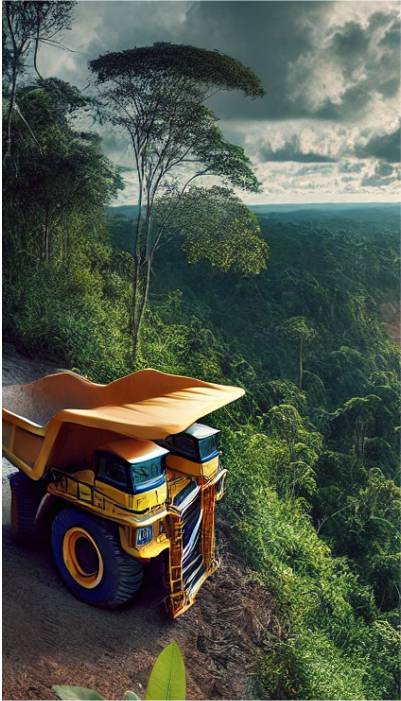
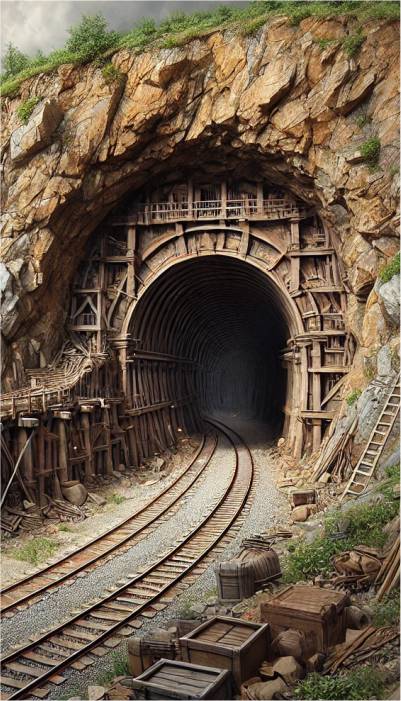
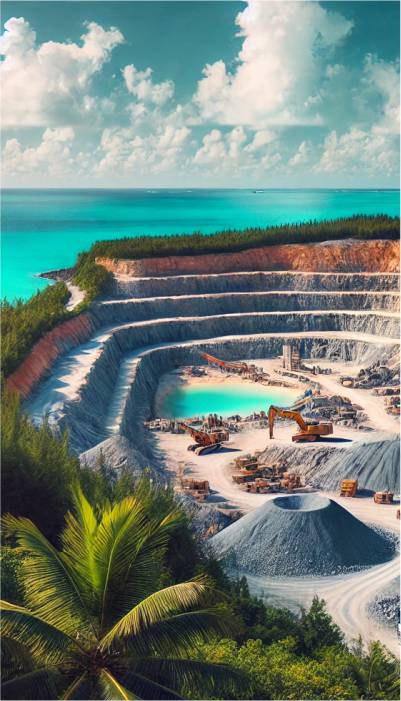
Safety and Compliance Training
Safety is paramount in quarrying and mining operations. These programs help workers understand and mitigate risks while ensuring compliance with regulations:
- Mine Safety and Health Administration (MSHA)
- Offers courses on safety practices, hazard awareness, and emergency response for mining professionals.
- Certifications include Part 46 and Part 48 training for surface and underground miners in the U.S.
- IOSH Managing Safely in Mining and Quarrying
- A globally recognized course focusing on safety management and risk assessment for supervisors and managers.
- NEBOSH International Technical Certificate in Mining
- Comprehensive training on health and safety in mining, covering risk control, environmental management, and workplace hazards.
Professional Development Programs
Enhance technical skills and industry-specific knowledge with these professional development opportunities:
- Institute of Quarrying (IQ) Professional Development Scheme
- Provides structured learning for quarry professionals, covering topics like environmental management, operations, and leadership.
- Certifications include Diploma in Quarry Technology and Diploma in Mineral Extractives.
- Edumine Online Courses
- Offers an extensive library of mining-related courses, from mine planning and operations to sustainability and innovation.
- Skills Training Australia – Quarry and Mining Courses
- Specializes in vocational training for quarry and mining operations, including courses on heavy machinery and blasting techniques.
Equipment Operation and Maintenance Training
Operating and maintaining heavy equipment efficiently and safely is a cornerstone of quarrying and mining:
- Caterpillar Operator Training
- Hands-on and virtual training for operating Caterpillar machinery, with a focus on safety, productivity, and fuel efficiency.
- Komatsu Training Academy
- Courses designed for operators, technicians, and supervisors, covering equipment maintenance, repair, and advanced technologies.
- Sandvik Training Services
- Technical training on crushers, drills, and other mining equipment, including troubleshooting and performance optimization.
Environmental Management Certifications
With sustainability becoming a priority, certifications in environmental management are increasingly valuable:
- ISO 14001 Environmental Management Certification
- Internationally recognized standard for creating sustainable and environmentally friendly operational practices.
- Environmental Protection Agency (EPA) Training
- Offers programs on compliance with environmental laws and the implementation of sustainable practices.
Advanced Technology and Digital Skills
The adoption of cutting-edge technology in the industry requires new skill sets:
- Trimble Certification for Geospatial and Mining Technologies
- Focused on GPS surveying, drone mapping, and data integration for mining and quarrying operations.
- Dassault Systèmes – Virtual Mine Training
- Training on simulation tools like GEOVIA, helping professionals optimize resource modeling and mine planning.
- Bentley Systems Training
- Provides specialized courses on mining infrastructure design and digital twins using software like OpenRoads and SYNCHRO.
Certifications for Leadership and Management
Leadership in quarrying and mining requires strong management skills and industry insight:
- Quarry Management Certification Scheme (QMCS)
- Endorsed by industry leaders, this certification ensures managers have the skills needed for efficient and sustainable quarry operations.
- MBA in Mining Management
- Universities like the University of British Columbia offer specialized MBAs focusing on managing complex mining operations.
Online Educational Resources
For those seeking cost-effective ways to build their skills, there are free or low-cost resources available:
- Online Courses via Highways.Today
- Industry Online Degrees and Courses on sustainability, geology, and engineering basics applicable to mining and quarrying.
Whether you’re an operator, engineer, manager, or sustainability advocate, investing in training and certifications will enhance your expertise, boost career prospects, and prepare you for the challenges of tomorrow’s quarrying and mining industries.
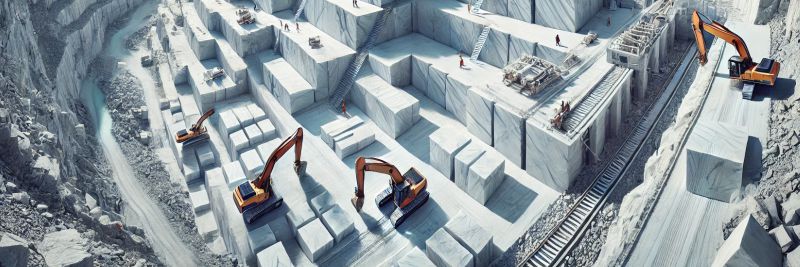
Plant, Equipment, and Technology Companies
The quarrying and mining industries rely on cutting-edge plant, equipment, and technology to optimize operations, enhance safety, and achieve sustainability goals. Below is a curated list of leading companies providing solutions tailored to the unique challenges of quarrying and mining.
Caterpillar (CAT)
- Specialization: Heavy equipment and machinery for mining and quarrying.
- Key Products: Excavators, wheel loaders, autonomous haul trucks, and surface drilling rigs.
- Innovations: Autonomous mining trucks and Cat MineStar™ technology for real-time fleet management.
Komatsu
- Specialization: Equipment for surface and underground mining.
- Key Products: Hydraulic excavators, dozers, haul trucks, and draglines.
- Innovations: Komatsu’s Autonomous Haulage System (AHS) and advanced safety features.
Sandvik
- Specialization: Crushing, screening, and drilling solutions.
- Key Products: Crushers, screeners, rock drills, and conveyor systems.
- Innovations: SmartPlant™ automation and MySandvik digital service platform for predictive maintenance.
Liebherr
- Specialization: Heavy equipment for mining and construction.
- Key Products: Mining trucks, excavators, and loaders.
- Innovations: Liebherr’s T 264 ultra-class truck and fuel-efficient hybrid excavators.
Volvo Construction Equipment
- Specialization: Machinery for mining, aggregates, and construction.
- Key Products: Articulated haulers, wheel loaders, and excavators.
- Innovations: Electric and hybrid equipment for sustainable operations.
Trimble
- Specialization: GPS, geospatial, and automation technology for quarrying and mining.
- Key Products: Grade control systems, fleet management tools, and 3D mapping solutions.
- Innovations: Connected Site® solutions and drone-based site mapping.
Metso Outotec
- Specialization: Mineral processing equipment and solutions.
- Key Products: Crushers, grinding mills, and filtration systems.
- Innovations: Sustainable technologies like Metso’s HRC™ high-pressure grinding rolls and digital monitoring tools.
FLSmidth
- Specialization: Equipment for cement, mining, and aggregates industries.
- Key Products: Crushing and grinding equipment, conveyors, and process automation.
- Innovations: MissionZero program for achieving sustainable quarry and mining operations.
Epiroc
- Specialization: Equipment for mining and infrastructure projects.
- Key Products: Rock drills, hydraulic breakers, and underground loaders.
- Innovations: SmartROC series for automated drilling and battery-powered mining vehicles.
Wirtgen Group (A John Deere Company)
- Specialization: Crushing and screening solutions for aggregates.
- Key Products: Kleemann crushers, screeners, and surface miners.
- Innovations: Eco-friendly crushing technology and Wirtgen SmartSurface mining systems.
Hitachi Construction Machinery
- Specialization: Excavators, wheel loaders, and mining trucks.
- Key Products: Ultra-large excavators and autonomous haulage systems.
- Innovations: Hitachi’s AI-based equipment management systems.
Atlas Copco
- Specialization: Compressors, drilling rigs, and mining tools.
- Key Products: Underground loaders, rock drilling tools, and air compressors.
- Innovations: Zero-emission equipment and remote-controlled mining systems.
Terex Corporation
- Specialization: Lifting, crushing, and material handling equipment.
- Key Products: Screeners, crushers, and conveyors.
- Innovations: Eco-friendly crushing technology and mobile plant solutions.
Hexagon Mining
- Specialization: Digital mining solutions.
- Key Products: Fleet management, safety, and monitoring software.
- Innovations: MineSight™ modeling software and collision avoidance systems.
Weir Minerals
- Specialization: Equipment for slurry transport, mineral processing, and dewatering.
- Key Products: Pumps, cyclones, and high-performance mill liners.
- Innovations: Enduron® HPGR technology for energy-efficient grinding.
These companies are at the forefront of innovation in quarrying and mining, providing solutions that improve efficiency, enhance safety, and promote sustainability. By leveraging their expertise, operators can stay competitive and meet the growing demands of the modern world.
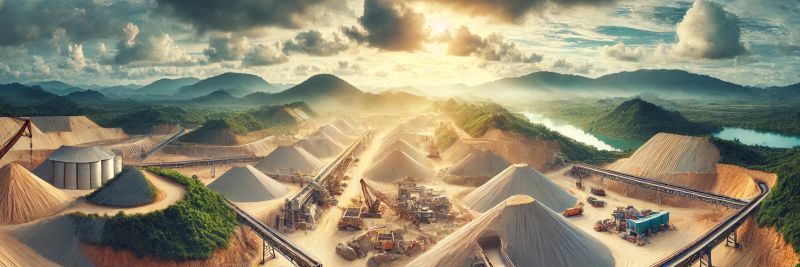
Sustainability in Focus: Green Quarrying and Mining
Sustainability has become a cornerstone of modern quarrying and mining operations. With growing global concerns about environmental impact, companies are implementing innovative strategies to minimize ecological footprints, preserve natural resources, and promote ethical practices. Here’s how the industry is leading the way in green practices.

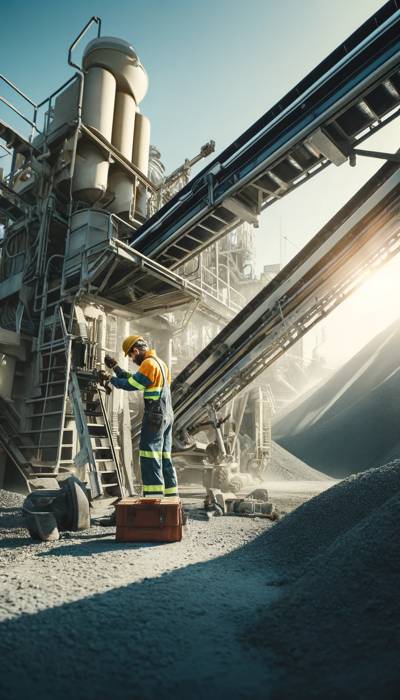
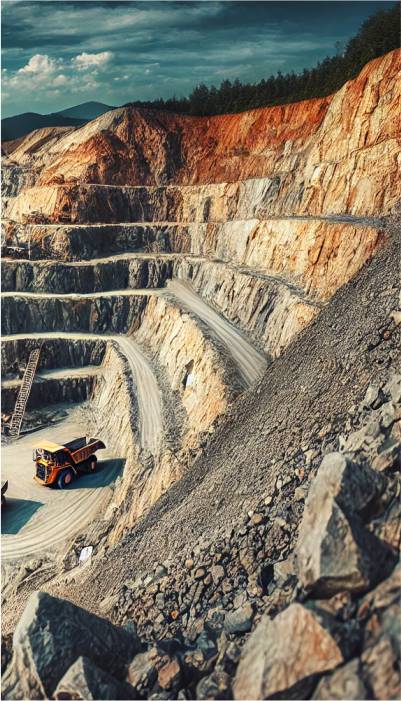
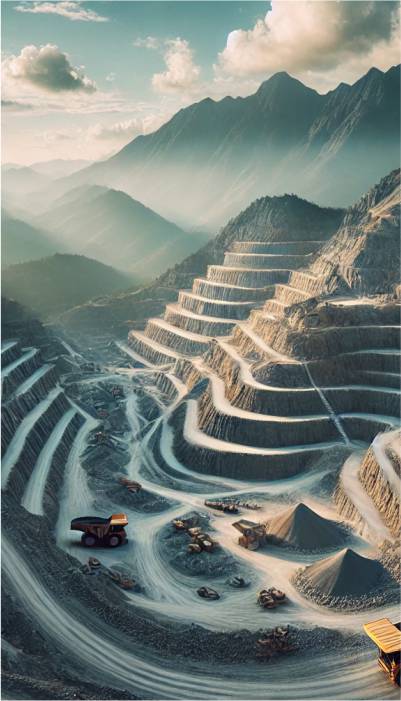
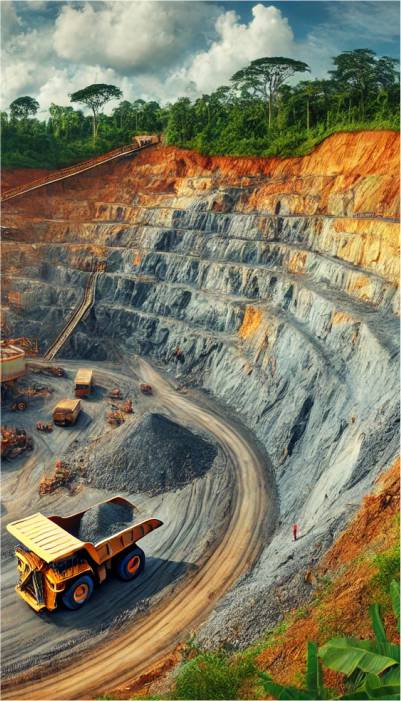

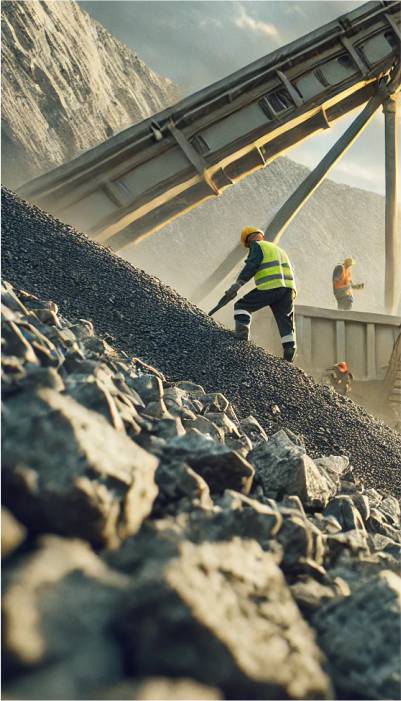
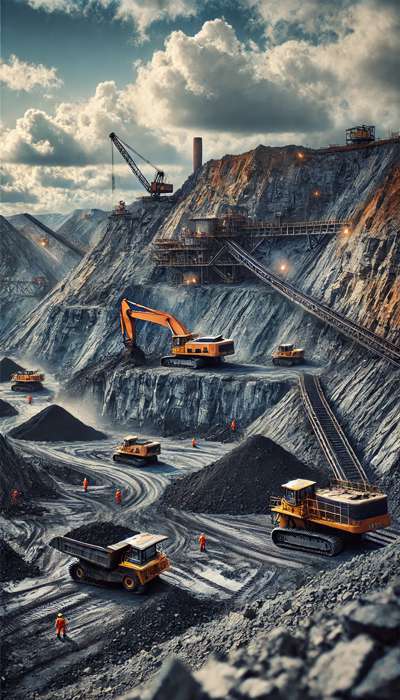
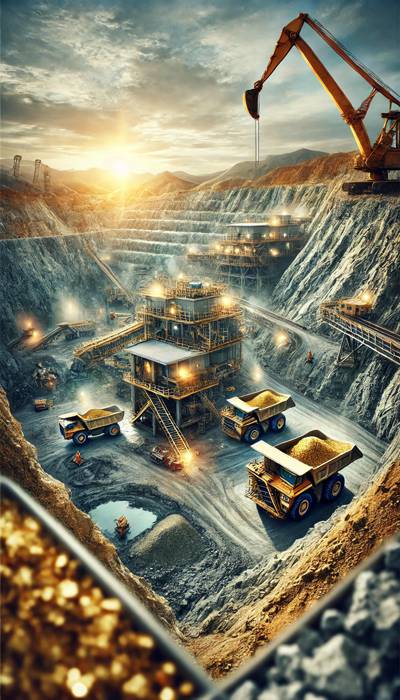
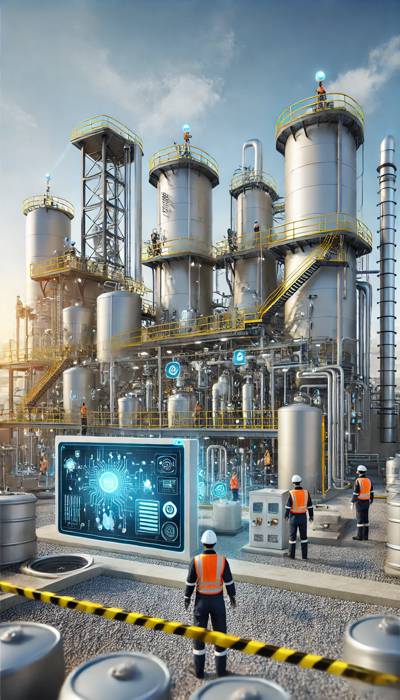
Renewable Energy Integration
One of the most significant shifts in quarrying and mining is the adoption of renewable energy sources to power operations.
- Solar and Wind Energy: Mining sites in sunny and windy regions are installing solar panels and wind turbines to offset energy consumption from fossil fuels.
- Hybrid and Electric Equipment: Companies are transitioning to electric haul trucks and hybrid excavators, reducing greenhouse gas emissions and lowering operational costs.
- Case in Point: A lithium mine in Australia has integrated a solar energy plant, cutting its reliance on diesel generators by 70%.
Water Conservation and Recycling
Water is a critical resource in mining and quarrying, used for dust suppression, processing, and cooling. Sustainable practices are helping to conserve and to recycle water:
- Closed-Loop Water Systems: These systems recirculate water within operations, reducing freshwater usage.
- Advanced Filtration: Filters remove contaminants from wastewater, allowing for reuse and preventing pollution of nearby water bodies.
- Case in Point: A copper mine in Chile uses seawater desalination and recycling systems, conserving scarce freshwater resources in an arid region.
Land Rehabilitation and Biodiversity Conservation
Mining and quarrying inevitably disrupt landscapes, but modern practices focus on restoring ecosystems once extraction is complete.
- Land Rehabilitation: Sites are transformed into parks, reservoirs, or wildlife habitats, ensuring long-term environmental and community benefits.
- Biodiversity Management: Companies work with ecologists to protect and reintroduce native species to rehabilitated areas.
- Case in Point: In Canada, a decommissioned quarry was converted into a thriving wetland, supporting migratory bird populations.
Carbon Capture and Emission Reduction
Reducing carbon footprints is a priority for the industry as governments impose stricter regulations on emissions.
- Low-Emission Equipment: Switching to electric or hydrogen-powered machinery helps reduce onsite emissions.
- Carbon Capture Technology: Innovations like carbon capture and storage (CCS) are being integrated into processing plants to trap CO₂ emissions.
- Case in Point: A gold mining operation in Nevada uses CCS technology to reduce its carbon output by thousands of tons annually.
Waste Management and Recycling
Efficient handling of mining byproducts is essential to minimize the environmental impact of quarries and mines.
- Tailings Recycling: Tailings, or waste materials from mineral processing, are being repurposed for construction materials, road bases, or backfilling mined areas.
- Waste-to-Product Innovations: Technologies are converting mining waste into usable products, reducing landfill volumes and environmental risks.
- Case in Point: An aggregate quarry in the UK repurposes its stone dust as a raw material for sustainable concrete.
Digital Technology for Sustainable Practices
Modern hi-tech Digital Tools are enabling smarter, more efficient, and environmentally friendly operations.
- Real-Time Monitoring: IoT sensors and AI-powered platforms track energy usage, emissions, and water consumption to optimize resource use.
- Digital Twins: Virtual models of operations allow companies to simulate and refine processes, minimizing waste and environmental damage.
- Case in Point: A mining company in South Africa uses digital twins to reduce energy use by 15% and improve equipment lifecycle efficiency.
Ethical Sourcing and Community Engagement
Sustainability also extends to ethical and social dimensions:
- Ethical Sourcing: Companies are adopting transparent supply chains to ensure that materials are responsibly extracted and traded.
- Community Benefits: Engaging local communities through education, healthcare, and job creation ensures long-term social sustainability.
- Case in Point: A cobalt mining operation in the Democratic Republic of Congo has implemented rigorous audits to ensure ethical labor practices and reinvested in local infrastructure projects.
Regulatory Compliance and Global Frameworks
Compliance with international frameworks and regulations is driving sustainability in the industry.
- ESG Standards: Companies are aligning with Environmental, Social, and Governance (ESG) criteria to attract investors and meet consumer expectations.
- ISO Certifications: Certifications like ISO 14001 (Environmental Management) and ISO 50001 (Energy Management) demonstrate a commitment to sustainable practices.
- Case in Point: A quarry in Germany earned ISO 14001 certification by implementing a comprehensive environmental management system.
Chemical-Free Extraction Methods
Innovative methods are being developed to minimize or eliminate the use of hazardous chemicals:
- Biomining: Using microbes to extract metals from ore, reducing the need for toxic chemicals.
- Hydrometallurgical Processes: Techniques that rely on water-based chemistry to replace harsher chemical reagents.
- Environmentally Friendly Reagents: Developing and adopting less toxic alternatives to traditional extraction chemicals.
- Case in Point: A gold mine in Finland implemented a cyanide-free gold extraction method, dramatically reducing environmental risks.
Chemical Containment and Management
Strict protocols and advanced technology ensure that hazardous chemicals are safely contained and managed:
- Secondary Containment Systems: Double-lined containment ponds prevent chemical leaks into surrounding soil and water.
- Spill Response Plans: Rapid containment measures and cleanup processes to mitigate accidental releases.
- Onsite Neutralization: Treating harmful chemicals before disposal to render them non-toxic.
- Case in Point: A copper mine in Chile uses advanced chemical treatment plants to neutralize acidic mine drainage, protecting nearby water sources.
Monitoring and Cleanup
Continuous monitoring and proactive cleanup of contaminated sites help prevent long-term damage:
- Groundwater Monitoring: IoT sensors detect and report chemical levels in nearby water sources.
- Environmental Remediation: Techniques like bioremediation and phytoremediation are used to clean up contaminated soil and water by employing plants and microbes.
- Tailings Management: Storing tailings in lined and monitored facilities minimizes the risk of chemical leaching.
- Case in Point: In the United States, a legacy mining site underwent extensive cleanup, with contaminated tailings encapsulated and a nearby river system restored to pre-mining health.
Policy and Regulation
Global initiatives and national laws are pushing the industry towards the safer use of mining related chemicals:
- International Cyanide Management Code: A voluntary industry standard for the safe production, transport, and use of cyanide in gold mining.
- Stricter Local Regulations: Many countries now mandate environmental impact assessments and stringent chemical use permits.
- Community Oversight: Local communities are empowered to monitor compliance and report violations.
- Case in Point: Mining companies in Canada adhere to robust regulatory frameworks, ensuring transparency in chemical handling and usage.
Sustainability is not just a challenge for the quarrying and mining industries—it’s an opportunity. By adopting green practices, companies can reduce costs, improve efficiency, and enhance their reputation, all while contributing to a healthier planet. Green quarrying and mining are paving the way for a more sustainable future.
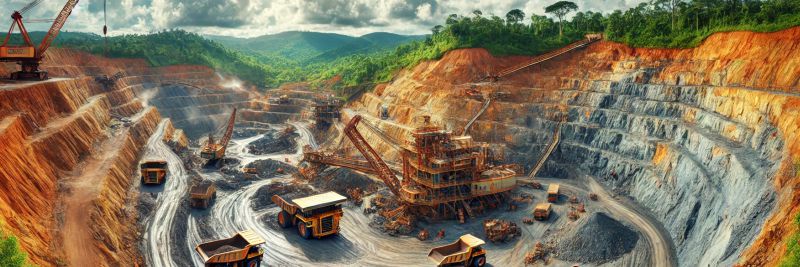
The Future of Quarrying and Mining
As the world evolves, so too does the quarrying and mining industry. With growing demand for resources, advancements in technology, and an urgent need for sustainability, the future of this sector is filled with both challenges and opportunities. By embracing innovation and prioritizing responsible practices, quarrying and mining are poised to play a pivotal role in building a more sustainable, connected, and equitable world.
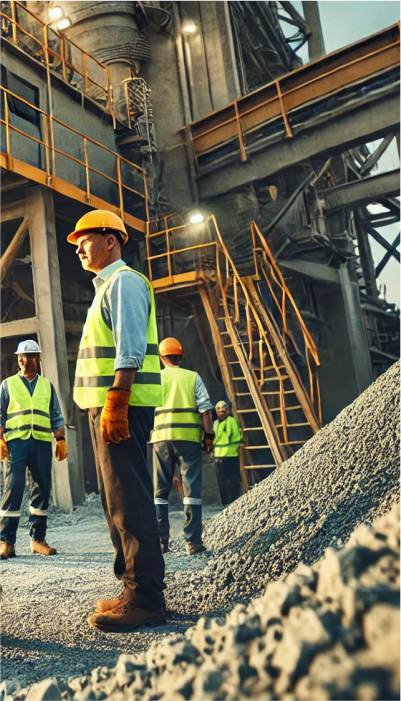
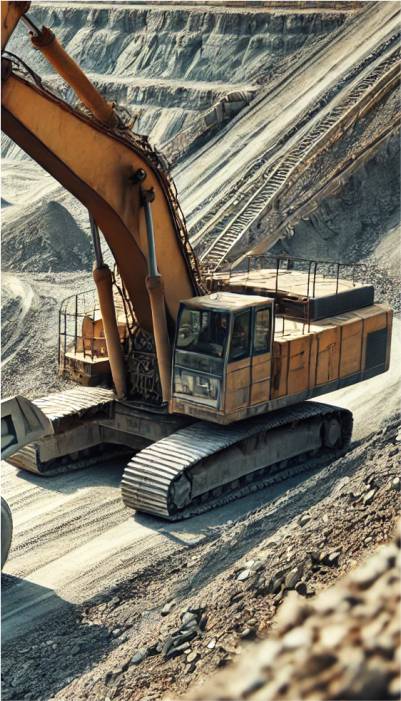

A Digital Revolution
The integration of digital technologies such as AI, IoT, and blockchain will continue to reshape the industry. Smart mining operations, powered by real-time data and autonomous machinery, will improve efficiency, reduce waste, and enhance safety. Digital twins and predictive analytics will help companies simulate operations and optimize resource management, ensuring precision and sustainability.
Green and Circular Practices
Environmental sustainability will remain a top priority as industries strive to reduce their carbon footprints and adopt circular economy principles. Efforts to recycle waste materials, implement renewable energy, and rehabilitate mined land will expand.
The industry’s ability to balance resource extraction with environmental stewardship will be critical to its long-term viability.
Meeting Critical Mineral Demand
With the transition to renewable energy and electric vehicles accelerating, the demand for critical minerals such as lithium, cobalt, and rare earth elements will grow exponentially.
Companies will need to innovate exploration techniques and strengthen supply chains while addressing ethical sourcing and geopolitical concerns.
Workforce Evolution
The industry’s workforce is set to undergo a transformation, with a greater emphasis on technical skills and digital expertise. Training programs and certifications will evolve to meet the demands of new technologies, while companies will also focus on fostering diversity and inclusion to build a resilient and innovative workforce.
Enhanced Safety Standards
Safety will remain a cornerstone of quarrying and mining operations. The use of wearable technology, advanced monitoring systems, and autonomous equipment will reduce risks, ensuring that workers remain protected in challenging environments.
Regulatory bodies will likely introduce stricter safety standards, pushing companies to continually innovate.
Collaboration and Community Engagement
Quarrying and mining companies will deepen their collaborations with local communities, governments, and environmental groups to ensure mutual benefits. Transparent practices and ethical operations will foster trust and align the industry with global goals such as the United Nations’ Sustainable Development Goals (SDGs).
The future of quarrying and mining lies in innovation, responsibility, and resilience. By leveraging advanced technologies, committing to sustainability, and prioritizing community engagement, the industry will remain a cornerstone of global development. As we look ahead, one thing is clear: quarrying and mining are not just about extraction—they’re about building the foundations for a better future.

Thank You for Exploring Quarry and Mining
We hope this comprehensive dive into the quarrying and mining industries has provided you with valuable insights, practical resources, and a glimpse into the transformative technologies shaping the future. From aggregates that form the backbone of our roads to the critical minerals driving technological advancements, this sector remains indispensable to modern infrastructure and innovation.
As the industry continues to evolve, we encourage you to stay informed, explore opportunities for growth, and embrace sustainable practices. Whether you’re a seasoned professional, an investor, or simply curious about the industry’s inner workings, Highways.Today is your platform for staying connected with the latest trends, innovations, and success stories.
Don’t forget to check out our upcoming features and explore the rest of the site for more updates, expert articles, and industry events. Together, let’s build a world that balances progress with responsibility. Thank you for joining us in uncovering the foundations of tomorrow’s infrastructure.









